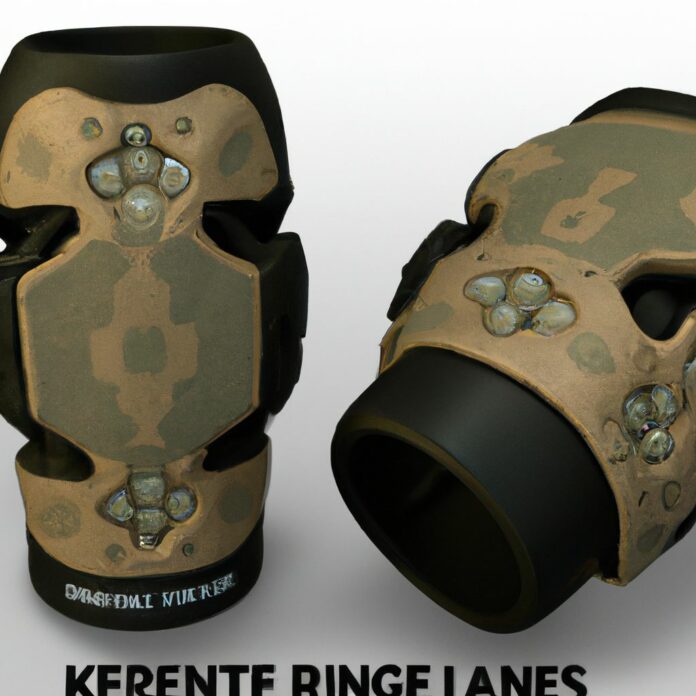Tactical knee pads are essential gear for individuals engaged in activities that require knee protection and support. Whether you’re a military or law enforcement professional, a tactical enthusiast, or someone who participates in challenging sports or outdoor activities, choosing the right knee pads is crucial.
In this guide, we will explore the factors to consider when selecting tactical knee pads and the different types available. We will also discuss how to properly fit knee pads and additional features to look out for.
Understanding the importance of tactical knee pads begins with recognizing the need for protection and injury prevention. Knee pads provide a layer of cushioning and support that helps reduce the risk of knee injuries during intense physical activities.
They also contribute to enhanced performance and comfort, allowing you to move with agility and confidence while minimizing discomfort and fatigue.
When choosing tactical knee pads, several factors should be taken into account. These include the material and durability of the knee pads, the fit and size that suits your body, the level of protection required for your specific activities, and the flexibility and range of motion provided by the knee pads.
Considerations such as breathability and moisture-wicking capabilities, the closure system, and the weight and bulkiness of the knee pads are also important.
There are various types of tactical knee pads available, including hard shell knee pads, soft shell knee pads, and hybrid knee pads. Each type offers different levels of protection and features, catering to different needs and preferences.
Properly fitting tactical knee pads is essential to ensure optimal functionality and comfort. It involves finding the right size and adjusting the straps or closures to keep the knee pads securely in place without restricting movement or causing discomfort.
Lastly, exploring additional features and considerations such as anti-slip technology, noise reduction, and compatibility with clothing and gear can further enhance your experience with tactical knee pads.
By considering these factors and understanding the various aspects of tactical knee pads, you can make an informed decision and select knee pads that best meet your needs for protection, comfort, and performance.
Why Do You Need Tactical Knee Pads?
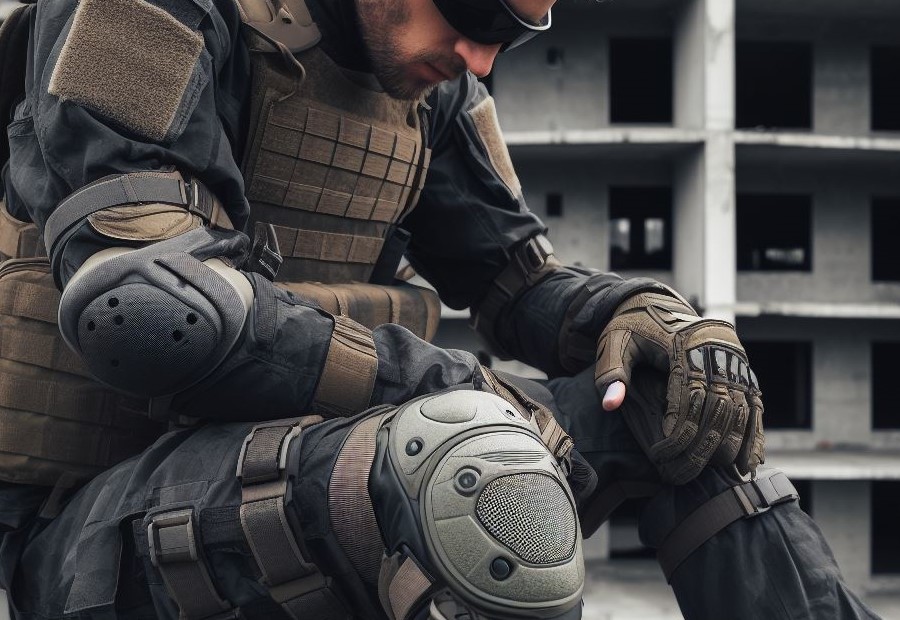
Imagine this scenario: You’re out on a mission, adrenaline pumping, navigating treacherous terrain. Suddenly, you stumble upon a section that could potentially be a game-changer.
In this section, we’ll uncover the reasons why tactical knee pads are an absolute necessity.
From the vital protection they provide to the potential for enhanced performance and comfort, we’re about to explore how this essential gear can make all the difference in the world.
So, buckle up and get ready to dive into the fascinating world of tactical knee pads.
Protection and Injury Prevention
When choosing tactical knee pads, protection and injury prevention should be your top priorities. It’s crucial to find knee pads that can provide essential protection and help prevent injuries in various situations.
Here are some important factors to consider:
- Padding: Make sure to look for knee pads that have adequate padding to absorb impact and reduce the risk of injury. Thick and cushioned padding will offer better protection.
- Hard Shell Protection: Knee pads with a hard shell provide enhanced protection against hard impacts, such as falls or collisions. They help distribute the force and prevent direct impact on the knee.
- Shock Absorption: Choose knee pads that have shock-absorbing capabilities to minimize the strain on your knees and joints, especially during high-impact activities.
- Secure Fit: It’s essential that your knee pads fit properly to stay in place during movement and offer continuous protection. Look for adjustable straps or fasteners to customize the fit.
- Range of Motion: Your knee pads should allow for a full range of motion without restricting movement. Flexibility is key for optimal performance and preventing strain or discomfort.
- Durability: Invest in knee pads made from durable materials that can withstand frequent use and resist wear and tear. Look for reinforced stitching and high-quality construction as indicators of durability.
- Breathability: Opt for knee pads that are breathable and moisture-wicking to prevent discomfort from sweat build-up. This feature helps keep your knee area dry and reduces the risk of skin irritation.
By considering these factors, you can choose tactical knee pads that offer excellent protection and help prevent injuries during physical activities.
Enhanced Performance and Comfort
When selecting tactical knee pads, it is important to consider several factors in order to enhance performance and provide comfort.
These factors include:
- Material and Durability: It is recommended to choose knee pads made from durable materials, such as nylon or neoprene. These materials can withstand repeated use and offer long-lasting comfort.
- Fit and Size: Proper fit is crucial for optimal performance and comfort. It is advisable to select knee pads with adjustable straps or elastic bands, allowing for a customized fit to your knees.
- Level of Protection: The level of protection provided by knee pads should be taken into consideration. Some knee pads have extra padding or reinforcement on impact zones, which helps protect against injuries and reduce discomfort.
- Flexibility and Range of Motion: Look for knee pads that allow for a full range of motion without restricting movement. This flexibility is essential for enhanced performance during tactical activities.
- Breathability and Moisture-Wicking: Opt for knee pads made from breathable materials and featuring moisture-wicking properties. This will help keep your knees cool and dry during intense physical activities.
- Closure System: The closure system of knee pads should also be considered. Popular options include Velcro straps or buckle closures, which provide a secure and adjustable fit.
- Weight and Bulkiness: Depending on your specific needs, it is important to consider the weight and bulkiness of the knee pads. Lighter and less bulky knee pads can enhance agility and overall performance.
By taking these factors into account, you can choose tactical knee pads that not only enhance your performance but also provide optimal comfort throughout your activities.
Factors to Consider When Choosing Tactical Knee Pads
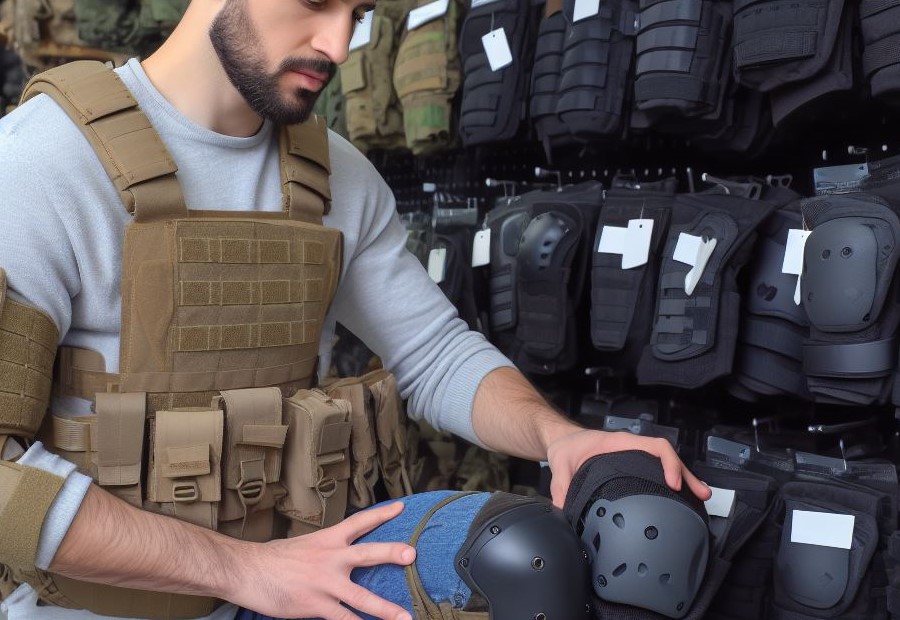
When it comes to choosing tactical knee pads, there are several factors to consider that can make all the difference in your experience on the field.
From the material and durability to the level of protection and flexibility, each sub-section holds valuable insights into finding the perfect knee pads for your needs.
So, let’s dive in and discover the key elements that will help you make an informed decision and keep you well-protected during your tactical activities.
Material and Durability
When it comes to choosing tactical knee pads, the material and durability are crucial factors to consider.
A table can help provide a clear comparison:
| Material | Durability |
| Nylon | High durability, resistant to abrasion and tear. |
| Neoprene | Durable and flexible, provides good shock absorption. |
| Polyurethane | Very durable, resistant to impact and punctures. |
| Kevlar | Extremely durable, offers excellent protection against cuts and abrasions. |
| Plastic | Lightweight and durable, suitable for low-impact activities. |
Choosing knee pads made from high-quality materials ensures they will withstand repetitive use and provide long-lasting protection.
The durability of the knee pads is important, especially in demanding activities where they may be subject to extreme conditions and rough terrains.
Fit and Size
- Proper fit: Tactical knee pads should securely and comfortably fit on your knees without being excessively tight or loose. They should not shift or slide during movement.
- Adjustability: Look for knee pads with adjustable straps or closures to ensure a customizable fit. This will enable you to tighten or loosen the knee pads as required.
- Size: Select knee pads that are the appropriate size for your knees. Most knee pads come in sizes such as small, medium, or large. Refer to the manufacturer’s sizing chart to determine the best fit for you.
- Consider the material: Some knee pads are crafted from stretchy and flexible materials, which provide a snug fit that conforms to your knee shape. Others may feature additional padding or reinforcement for enhanced comfort and protection.
- Test the range of motion: Before buying knee pads, evaluate their flexibility and range of motion. Ensure that they do not impede your movement or hinder your performance.
Level of Protection
The level of protection is a crucial factor to consider when choosing tactical knee pads. It determines the amount of protection they provide against impact, abrasions, and injuries.
Tactical knee pads can vary in their level of protection based on the materials used and their design features.
To showcase the different levels of protection provided by tactical knee pads, the following table presents three types of knee pads with their corresponding protection levels:
| Type of Knee Pads | Level of Protection |
| Hard Shell Knee Pads | High |
| Soft Shell Knee Pads | Medium |
| Hybrid Knee Pads | Variable (depending on the design) |
Hard shell knee pads offer the highest level of protection due to their rigid outer shell, which effectively absorbs and distributes impact force. Soft shell knee pads provide a medium level of protection by utilizing foam or gel padding to cushion against impacts.
Hybrid knee pads, on the other hand, offer a variable level of protection as they combine the features of both hard and soft-shell knee pads. This allows users to customize their protection based on their specific needs and preferences.
Flexibility and Range of Motion
When considering tactical knee pads, flexibility and range of motion are crucial factors to keep in mind. Here are some key points to consider:
- Freedom of movement: When searching for knee pads, prioritize those that allow for a wide range of motion, enabling you to perform various tasks without feeling restricted.
- Articulated design: It is advisable to choose knee pads with an articulated design as they are specifically crafted to move with your body, providing maximum flexibility.
- Bendability: Make sure that the knee pads are flexible enough to bend and conform to the natural movement of your knees.
- Padded protection: While focusing on flexibility, also ensure that the knee pads offer adequate cushioning and protection against impacts and injuries.
- Secure fit: It is crucial to select knee pads that stay securely in place while allowing flexibility. Look for adjustable straps or closures that provide a snug and comfortable fit.
Having knee pads that provide flexibility and a wide range of motion is essential for tasks that require agility and quick movements.
It allows you to perform comfortably without compromising the well-being of your knees.
Keep these factors in mind when choosing tactical knee pads to ensure they meet your specific needs and provide optimal flexibility and range of motion.
Breathability and Moisture-Wicking
When choosing tactical knee pads, it is important to consider their breathability and moisture-wicking capabilities. This is crucial for ensuring comfort and preventing sweat buildup during intense physical activities. Here are some factors to consider:
- Material: Look for knee pads made from breathable materials such as neoprene or mesh. These materials allow air to circulate, keeping your knees cool and promoting breathability and moisture-wicking to prevent excessive sweating.
- Design: Opt for knee pads with ventilation channels or perforations. These features promote airflow and help to enhance breathability and moisture-wicking capabilities, keeping your knees dry and comfortable.
- Moisture-Wicking Technology: Choose knee pads that incorporate moisture-wicking fabrics or technologies. These fabrics draw moisture away from the skin and towards the surface of the knee pad, where it can evaporate more easily, ensuring breathability and effective moisture-wicking.
- Antimicrobial Treatment: Consider knee pads treated with antimicrobial agents. These treatments help to prevent the growth of bacteria and reduce bad odors caused by sweat and moisture while also maintaining breathability and moisture-wicking capabilities.
- Proper Fit: Ensure that the knee pads fit snugly without being too tight. A secure fit will allow for better airflow, promoting breathability and effective moisture-wicking, and help to prevent moisture buildup.
Pro-tip: To enhance breathability and moisture-wicking, you can also wear moisture-wicking knee sleeves underneath your knee pads. These sleeves provide an additional layer of protection and help to keep your knees dry and comfortable throughout your activities.
Closure System
The closure system is a crucial factor to consider when selecting tactical knee pads. It plays a significant role in determining how securely the knee pads will stay in place during physical activities. There are various types of closure systems available, each with their own unique benefits.
Here is a table that highlights the commonly used closure systems in tactical knee pads:
| Closure System | Description |
|---|---|
| Hook and Loop | This system utilizes hook and loop fasteners, such as Velcro, to secure the knee pads around the knees. It allows for effortless adjustability and a snug fit. |
| Buckle | Knee pads with buckle closures typically feature straps that fasten with a buckle mechanism. They provide a secure and customizable fit. |
| Elastic Straps | Knee pads with elastic straps have stretchable bands that can be pulled over the knees and adjusted to fit comfortably. They offer flexibility and ease of use. |
| Quick-release Clips | This closure system incorporates clips or buckles that can be easily opened and closed for quick removal or adjustment of the knee pads. It is convenient for fast-paced activities. |
When choosing a closure system for your tactical knee pads, it is important to consider the desired level of security and adjustability, as well as the ease of use.
Selecting a closure system that provides a secure fit is crucial to prevent the knee pads from shifting or slipping during intense physical movements.
Remember to try on the knee pads and test the closure system before making a purchase to ensure it meets your needs and preferences.
So, whether you prefer the adjustability of hook and loop closures, the security of buckle closures, the flexibility of elastic straps, or the convenience of quick-release clips, there is a closure system suited to your specific requirements.
Weight and Bulkiness
When considering tactical knee pads, weight and bulkiness are crucial factors to keep in mind. Here are some key points to consider:
- Weight: Tactical knee pads should be lightweight to ensure comfort and ease of movement. Heavy knee pads can hinder mobility and impede performance. Look for knee pads made with lightweight materials such as neoprene or nylon.
- Bulkiness: The bulkiness of knee pads can affect how well they fit under clothing or gear. Bulky knee pads may limit movement or feel uncomfortable when worn for long periods. Opt for knee pads with a low-profile design to minimize bulkiness.
- Adjustability: Knee pads that offer adjustable straps or closures allow for a personalized fit and can help reduce bulkiness. Versatile or buckle closures are common options that provide a secure fit without adding excessive bulk.
- Protection: While it is important to choose knee pads that are lightweight and not overly bulky, they should still provide sufficient protection. Look for knee pads with a durable outer shell or padding to absorb impact and protect your knees during intense activities.
- Comfort: The weight and bulkiness of knee pads can impact overall comfort. Look for knee pads with additional features like cushioning or padding for enhanced comfort during prolonged use.
By considering the weight and bulkiness of tactical knee pads, you can find a pair that offers effective protection without compromising mobility or comfort.
Types of Tactical Knee Pads
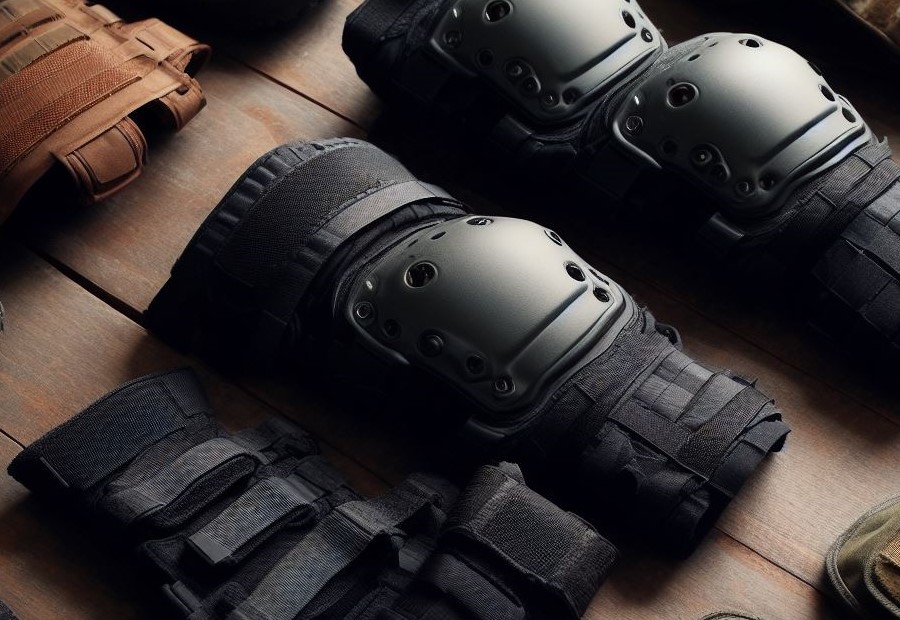
Looking to protect your knees during tactical activities? Let’s dive into the world of knee pads!
In this section, we’ll explore the different types of tactical knee pads that are available. From hard shell knee pads designed for maximum protection to soft shell knee pads for enhanced mobility, and even hybrid knee pads that offer a balance of both.
Get ready to discover which type suits your needs and take your mission to the next level!
Hard Shell Knee Pads
Hard shell knee pads, made from rigid materials such as plastic or hard rubber, ensure maximum protection and durability.
These knee pads are specifically designed to withstand heavy impact and provide excellent resistance against abrasions and punctures.
Perfect for high-intensity activities and tactical operations, hard shell knee pads maintain their shape and integrity even under extreme conditions.
When selecting hard shell knee pads, consider factors such as material quality, fit and size, level of protection, flexibility and range of motion, and closure system.
Look for knee pads with a strong and durable outer shell that offer a comfortable and secure fit.
Additionally, take into account the weight and bulkiness of the knee pads, as this can impact mobility and comfort.
It’s recommended to try out different brands and models to find the best hard shell knee pads that meet your specific needs and preferences.
Remember, investing in high-quality knee pads is essential for ensuring the safety and well-being of your knees during demanding physical activities.
Soft Shell Knee Pads
Soft shell knee pads are a popular choice for many individuals due to their flexibility and comfort.
When choosing soft shell knee pads, there are several key features to consider. Let’s explore them:
- Material: Soft shell knee pads are typically made with flexible and durable materials such as neoprene or nylon.
- Padding: It is important to look for knee pads with adequate padding to provide cushioning and protection for your knees.
- Fit: Ensuring that the knee pads have a snug and secure fit is crucial to prevent them from moving or sliding during use.
- Flexibility: Soft shell knee pads offer a greater range of motion compared to other types, allowing for greater agility and mobility.
- Comfort: The soft and flexible materials used in soft shell knee pads provide a comfortable fit, making them suitable for extended use.
When selecting soft shell knee pads, it is essential to consider your specific needs and preferences. If you frequently engage in activities that involve kneeling or crawling, opting for knee pads with extra padding can provide enhanced protection.
Additionally, it is worth considering the level of breathability and moisture-wicking properties of the knee pads to ensure you stay cool and comfortable during physical activities.
Remember, finding the right knee pads is crucial for protecting your knees and preventing injuries. Take the time to try on different brands and models to ensure a proper fit and adequate protection.
With the right soft shell knee pads, you can enjoy improved comfort and performance during your active pursuits.
Hybrid Knee Pads
Hybrid knee pads offer the perfect combination of hard shell and soft shell materials, providing both protection and flexibility.
These knee pads are designed with advanced impact resistance, making them ideal for high-impact activities that require reliable protection against impact and abrasion.
With their soft shell component, hybrid knee pads offer enhanced flexibility, allowing for a greater range of motion during activities such as bending, kneeling, and squatting.
Comfort is a priority with hybrid knee pads, as they are often equipped with adjustable straps and ergonomic designs to ensure a secure and comfortable fit, even during extended wear.
Hybrid knee pads are suitable for a variety of applications, including tactical operations, construction work, sports, and outdoor activities, making them a versatile choice.
When it comes to different surfaces, hybrid knee pads have you covered. The hard-shell component provides reliable protection on uneven and rough surfaces, while the soft-shell component offers cushioning on hard surfaces.
Thanks to their durable construction using high-quality materials, hybrid knee pads are resistant to wear and tear, ensuring long-lasting performance.
Many hybrid knee pads incorporate breathable fabrics and moisture-wicking technologies, keeping sweat and moisture at bay and the wearer comfortable and dry.
Keeping your hybrid knee pads clean and well-maintained is a breeze, as they are often designed for easy maintenance, allowing for hassle-free usage.
How to Properly Fit Tactical Knee Pads?
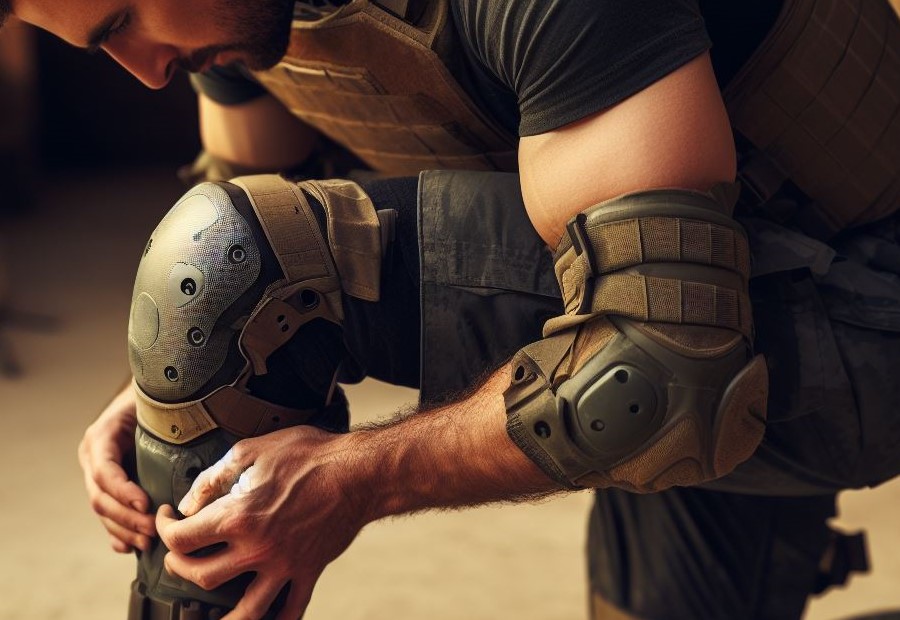
Are you wondering how to properly fit tactical knee pads? It’s important to achieve the perfect fit for comfort and effective protection.
Just follow these steps:
- Measure your knee: Using a measuring tape, determine the circumference of your knee.
- Select the right size: Consult the manufacturer’s sizing chart and choose the appropriate knee pad size based on your measurements.
- Put on the knee pad: Slide your leg into the knee pad, making sure it’s centered over your knee cap.
- Adjust the straps: Securely fasten the straps around your leg, ensuring a snug yet comfortable fit. Avoid over-tightening to maintain proper movement and circulation.
- Test for mobility: Bend and flex your knee to ensure the knee pad doesn’t restrict your range of motion. It should stay in place without slipping.
- Check for comfort: Wear the knee pad for a few minutes and assess how it feels. It should not cause any discomfort or irritation.
- Perform a functionality test: If possible, try performing movements or activities you would typically do while wearing knee pads. Ensure they don’t hinder your performance.
- Regularly reassess fit: Over time, periodically check the fit of your knee pads to ensure they remain snug and effective. Adjust the straps if necessary.
Additional Features and Considerations
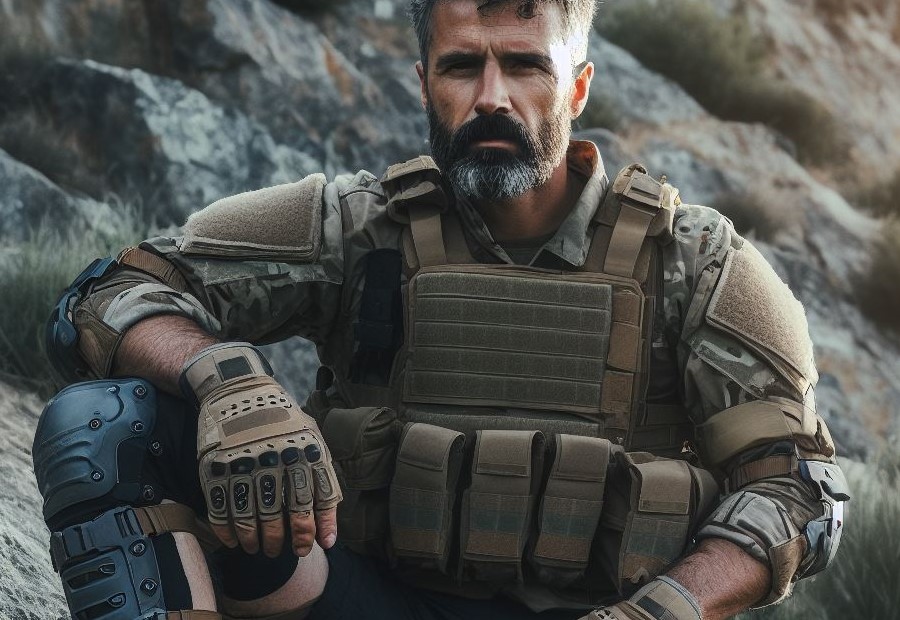
When choosing tactical knee pads, there are additional features and considerations that go beyond just protection.
In this section, we’ll dig into what sets knee pads apart from one another. We’ll explore features like anti-slip technology, noise reduction, and compatibility with clothing and gear.
So, get ready to discover the unique benefits that these additional features can offer and make an informed decision when it comes to your knee protection needs.
Anti-Slip Technology
When selecting tactical knee pads, it is important to consider the crucial feature of anti-slip technology. This technology plays a crucial role in keeping the knee pads securely in place during intense activities or movements.
Here are some important points to understand about anti-slip technology:
- Grip pads: Many knee pads incorporate grip pads or silicone strips on the inner surface to enhance grip against the leg. This helps prevent the knee pads from sliding down or shifting during physical activities.
- Adjustable straps: Knee pads with adjustable straps allow for a customized fit and secure fastening to the legs. This ensures that the knee pads stay in place even during strenuous movements.
- Elastic materials: Certain knee pads are made of elastic materials that provide a snug fit and prevent slipping. These materials conform to the shape of the knee and firmly hold the knee pads in place.
- Additional fasteners: Some knee pads feature extra fasteners such as hook-and-loop closures or buckles. These provide added security and stability, reducing the risk of the knee pads sliding off or getting displaced.
By incorporating anti-slip technology, tactical knee pads offer reliable protection without compromising performance. It is important to choose knee pads with effective anti-slip features to maximize their functionality and provide optimal support during intense physical activities.
Noise Reduction
Noise reduction is a crucial consideration when selecting tactical knee pads. Here are some important factors to remember:
- Noise reduction feature: It is important to look for knee pads that incorporate built-in noise reduction technology. This feature helps minimize any noise or sound generated while moving or kneeling.
- Impact absorption: Effective noise reduction is often achieved through efficient impact absorption. It is advisable to choose knee pads with high-quality padding or cushioning materials, such as memory foam or gel, to help absorb impacts and minimize noise.
- Material quality: The material composition of knee pads also plays a role in noise reduction. Opting for knee pads made from durable and dense materials like nylon or neoprene can assist in dampening noise.
- Tight fit: A snug and secure fit is necessary for noise reduction. Ensuring that the knee pads fit correctly and remain in place during movement helps minimize any rattling or additional noise.
- Testing and reviews: To ensure the effectiveness of noise reduction in knee pads, it is beneficial to read reviews or select products that have undergone specific testing for noise reduction. This provides a better understanding of how well the knee pads perform in reducing noise.
Compatibility with Clothing and Gear
When choosing tactical knee pads, it is crucial to consider their compatibility with clothing and gear. This factor ensures that the knee pads seamlessly integrate with your existing equipment and do not hinder your movement or functionality.
- Size and fit: The knee pads should have adjustable straps or fasteners to accommodate different leg sizes and securely stay in place. This allows for easy compatibility with different types of pants or uniforms.
- Design and profile: Opt for knee pads with a low-profile design that do not add excessive bulk or snag on clothing or gear. This ensures smooth compatibility with tactical pants or other protective gear.
- Material and construction: Choose knee pads made from durable materials that can withstand the rigors of tactical activities and are resistant to wear and tear. Additionally, consider knee pads with reinforced areas to prevent any damage that may occur from gear rubbing against them.
- Flexibility and range of motion: The knee pads should not restrict your movement or impede your ability to perform various tactical tasks. Flexibility in the knee pad design ensures compatibility with different motions and positions.
- Closure system: Look for knee pads with a secure and adjustable closure system. This allows you to tighten or loosen the knee pads as needed for proper compatibility with your clothing and gear.
- Compatibility with clothing and gear is crucial for seamless integration and optimal performance during tactical operations. Consider these factors to ensure that your chosen knee pads work efficiently with your existing equipment.
Frequently Asked Questions
What are the important factors to consider when choosing tactical knee pads?
When choosing tactical knee pads, it is important to consider factors such as comfort, protection, durability, and the fastening system. These factors will determine how well the knee pads perform and how well they can protect your knees.
Which tactical knee pads offer the best protection and comfort?
The Alta Contour Protector Pad 52913.09, Condor Outdoor Pad, Hatch XTAK Knee Pads, Blackhawk Tactical Knee Pads, IDOGEAR G3 Protective Pads, Alta Contour Protector Pad 52913.16, and Alta Flex Protector Pad are some of the top picks for tactical knee pads.
These knee pads offer excellent protection and comfort for various activities.
What advantages do the Alta Contour Protector Pad 52913.09 offer?
The Alta Contour Protector Pad 52913.09 is comfortable and lightweight, making it suitable for hunting. It features ergonomic materials, adjustable straps, and a non-slip rubber cap for added protection.
What features make the Crye Precision G3 Combat Pants stand out?
The Crye Precision G3 Combat Pants, combined with Crye’s Airflex knee pads, are considered the best overall option for tactical knee pads. These pants offer class-leading comfort and mobility with adjustable straps and four-way stretch panels.
The Airflex knee pads feature a two-stage design for abrasion and impact protection.
Can you recommend budget-friendly tactical knee pads?
If you are on a budget, the Arc’teryx LEAF Combat Knee Caps are a good option. These self-contained knee pads work with any pants and offer secure fastening and excellent padding.
What tactical knee pads are best for extreme sports?
If you are involved in extreme activities, the Rothco Tactical Knee Pads are ideal. With a non-slip rubber cap and 0.5-inch foam padding, these knee pads provide the necessary protection. They also feature hook and loop fasteners for a secure fit.

